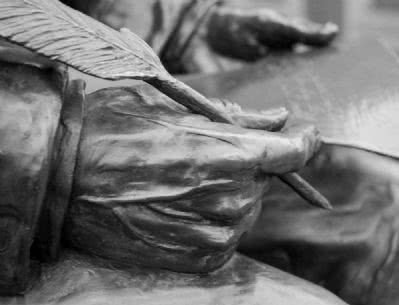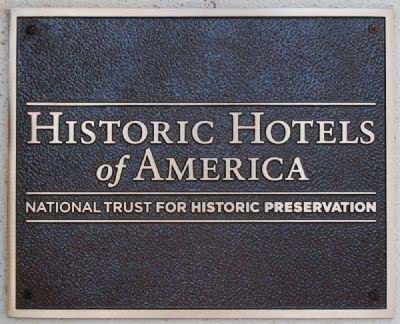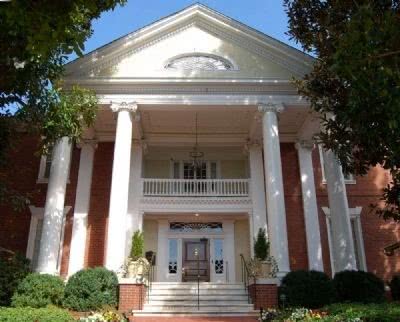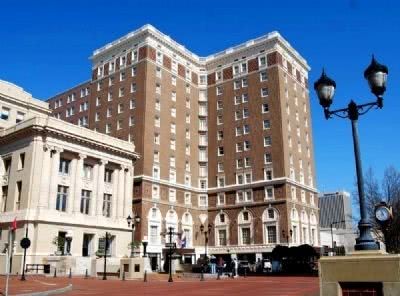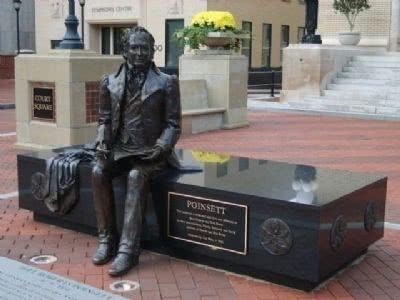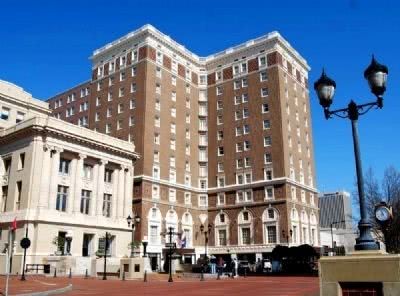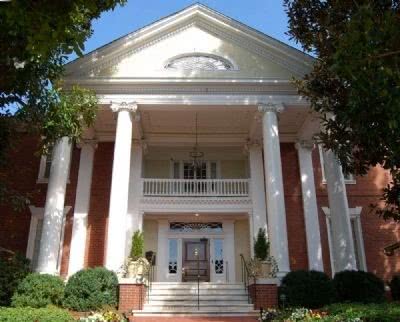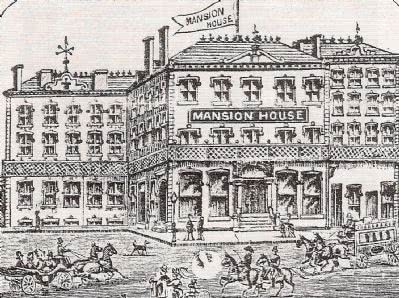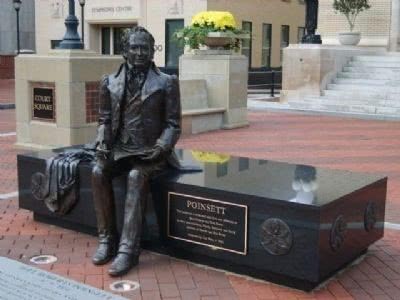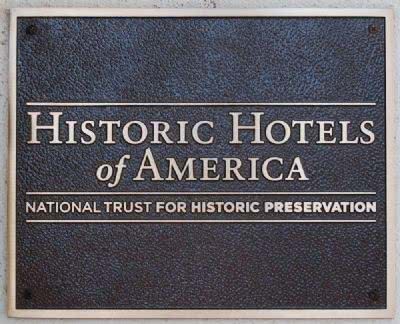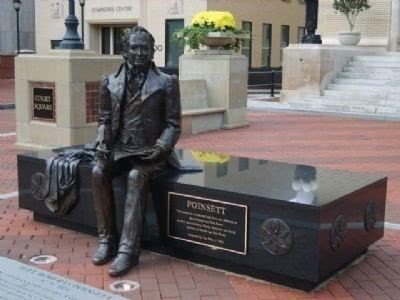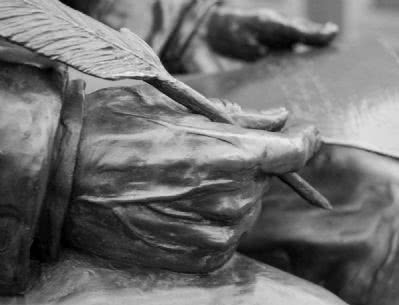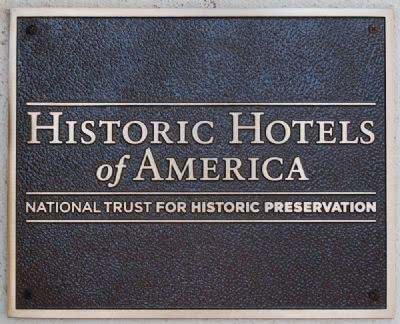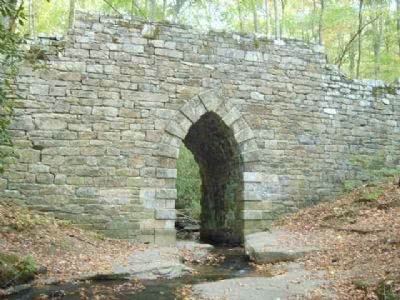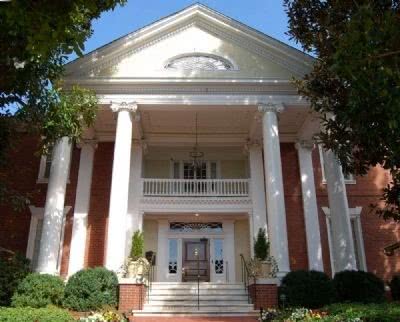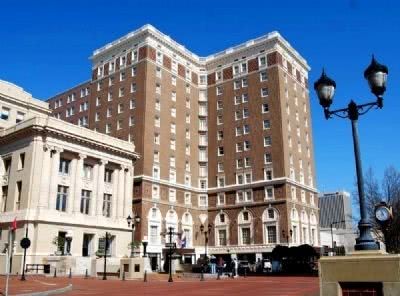Joel Roberts Poinsett
Inscription. [Front]:
Born in Charleston, S.C., educated in this country and Great Britain, he travelled widely in Europe and Asia before returning to a distinguished career. He served South Carolina in the state legislature, 1816-1820; 1830-1832; and as Chairman of the Board of Public Works 1818-1820. He represented S.C. in Congress 1821-1825, was first American Minister to Mexico 1825-1829, and Secretary of War 1837-1841.
Planter. Writer. Botanist. Diplomat. Statesman. Joel R. Poinsett had a summer home near here dividing his time in later life between it and his plantation on the Peedee River. He brought the lovely poinsettia to this country from Mexico. His cultural interests and scientific pursuits earned him the title “Versatile American.” He died December 12, 1851, at Stateburg, S.C., and was buried there at the Church of the Holy Cross.
Additional comments.
1. About Joel Robert Poinsett
It’s widely known that Joel Poinsett was the first ambassador to Mexico, a position he held for five years, but he also served as the first consul-general of the United States to Buenos Aries, Argentina, and Santiago, Chile. He studied medicine and law, and not surprisingly was extremely well traveled, but he also had interests in natural history, science, and politics.
While serving in the South Carolina legislature, Poinsett was appointed president of the board of public works from 1819 to 1821, a position that had him overseeing construction of the state road that traversed Saluda Mountain. This road (modern-day S.C. Secondary Road 42) ran from Charleston, through Columbia, and into North Carolina, creating a seamless connector capable of accommodating even the “heaviest load,” in places of several ineffective roads already in existence. Not surprisingly, more than twenty years later, he would join Vardry McBee and others to support connecting Columbia and Greenville by rail. (Source: G: The Magazine of Greenville, Jan/Feb 09, pg 68.)
By Brian Scott, November 21, 2007
6. Joel Poinsett Statue –
Located In Front of the Old Courthouse
Bronze sculpture by Zan Wells. On July 4, 1851, Poinsett stood near this site and made a speech in favor of preserving the Union.
? Submitted March 21, 2009, by Brian Scott of Greenville, South Carolina.
2. Joel Poinsett: History in Brief
At a Glance Poinsett was an eternal public servant and an amateur botanist. He served in both the South Carolina legislature and the U.S. Congress, was appointed secretary of war, and served as an ambassador to several countries.
Claim to Fame During his tenure as the first U.S. minister to Mexico from 1825-1830, Poinsett brought with him the Euphorbia pulchernima plant, now known as the poinsettia.
Did You Know? Poinsett was named secretary of war by President Martin Van Buren, and during that tenure he worked with other like-minded public servants to found the National Institute for the Promotion of Science, a precursor to the Smithsonian Institute.
A Grave Tale Poinsett was a summer resident of Greenville, and died en route from Charleston to Greenville in 1851 at the home of Dr. William Anderson in Statesburg, South Carolina. He is buried in the churchyard of the Church of the Holy Cross there, where his tombstone reads, “A pure patriot, an honest man, and a good Christian.” (Source: G: The Magazine of Greenville, Jan/Feb 09, pg 69.)
? Submitted March 21, 2009, by Brian Scott of Greenville, South Carolina.
By Brian Scott
7. Poinsett Statue –
Hand Detail
3. Joel Roberts Poinsett (1779 – 1851)
Poinsett, Joel Roberts, a Representative from South Carolina; born in Charleston, S.C., March 2, 1779; spent his early childhood in England; returned to America in 1788; attended private school at Greenfield Hill, Conn., and later in Wandsworth, near London, England; studied medicine at the University of Edinburgh, Scotland, and attended the military school in Woolwich, England; returned to Charleston, S.C., in 1800; studied law for a few months; traveled extensively in Europe from 1801 to 1809, returning to the United States for short intervals; sent to South America by President Madison in 1809 to investigate the prospects of the revolutionists there in their struggle for independence from Spain; returned to Charleston, S.C., in 1816; member of the state house of representatives 1816-1819; served as president of the board of public works; declined the offer of commissioner to South America by President Monroe; elected as a Republican to the Seventeenth Congress reelected as a Jackson Republican to the Eighteenth Congress, and elected as a Jacksonian to the Nineteenth Congress and served from March 4, 1821, to March 7, 1825, when he resigned to enter the diplomatic service; Minister to Mexico 1825-1829; member of the state house of representatives, 1830-1831; Secretary of War in the Cabinet of President
By Brian Scott
8. Poinsett Statue –
Face Detail
Van Buren 1837-1841; died near what is now Statesburg, Sumter County, S.C., December 12, 1851; interment in the Church of the Holy Cross (Episcopal) Cemetery. (Source: Biographical Directory of the U.S. Congress.)
? Submitted March 24, 2009, by Brian Scott of Greenville, South Carolina.
4. About the Poinsett Hotel
Built in 1925 at a cost of $1.5 million, the Poinsett hotel was designed by W.L. Stoddard, a New York architect, and built by the J.E. Sirrine Company of Greenville. The Poinsett is a twelve-story skyscraper with a narrow rectangular plan and an L-shaped facade. The four-story base of the Poinsett is highlighted by tall arched windows that span the second and third stories.
The Poinsett Hotel was one of the first skyscrapers to be constructed in Greenville. The hotel, named after Joel R. Poinsett, the Secretary of War under President Fillmore, was touted as “South Carolina’s finest.” It was built on the site of the Mansion House, an 1824 resort hotel. The Poinsett Hotel marks an era of Greenville?s building boom and growth in the 1920s. It has remained open as a hotel until recent years, when it was converted into apartments for the elderly. [Ed. Note: The hotel has since reopened.] The interior retains much of its original fabric, including decorative plaster work and marble. William L. Stoddard, the hotel’s architect, was a distinguished New york architect who designed major hotels in many cities across the nation, including the Charleston, South Carolina hotel. The Poinsett Hotel exemplifies the early twentieth century mode of skyscraper construction and composition. (Source: National Registration nomination form.)
Special Collections, South Carolina Library, USC Columbia, April 11, 2009
9. The Mansion House
Originally Located at the Site of the Poinsett Hotel
Built by William Toney, this 24-room hotel was built to accommodate the coastal planters who came to Greenville during the summer months to escape the heat and malaria. The hotel occupied lots seven and eight of the original city plan. Inside, the hotel featured marble floors, glass chandeliers, and a rope-operated elevator. John C. Calhoun was a regular guest at the hotel when he visited Greenville.
? Submitted March 21, 2009, by Brian Scott of Greenville, South Carolina.
5. About the Poinsett Hotel
About the same time, a building boom began that changed the skyline of the city. In March 1924 the News pronounced that “1924 promises to become the greatest building year in Greenville’s history. Already business and residential construction worth about $810,000 is underway.” That figure did not include the Poinsett Hotel and the Chamber of Commerce Building, whose projected costs were $1.25 million.
The Poinsett Hotel, which was planned to replace the century-old Mansion House, was the brainchild of John T. Woodside and William Goldsmith who formed the Community Hotel Corporation to build a “million dollar hotel. “59 The Mansion House was razed, and the ground breaking for the new twelve-story hotel took place on May 30,1924. W. L. Stoddard of New York was the architect, and Hunkin and Conkey of Cleveland, Ohio, was the contractor for the hotel. The Poinsett eventually cost $1.5 million and opened one hundred rooms in June 1925. An arcade led into the building from Main Street, and a half-flight of marble stairs rose to the lobby, which was paneled in walnut. The ballroom, according to the News) was “a thing of wondrous beauty.” The first manager of the Poinsett was Charles G.
William B. Coxe Collection, Greenville County Historical Society, April 12, 2009
10. Summer Home of Joel and Mary Poinsett
The home shown is the second summer home of the Poinsetts. The first, known as Homestead, and was located on Pendleton Road, west of Greenville. Due to the endless steam of visitors, the Poinsetts moved to the northwestern section of Greenville County. The house shown is no longer standing. (Source: Remembering Greenville: Photographs from the Coxe Collection by Jeffrey R. Willis and the Greenville County Historical Society, 2006, pg 143.)
Day, the former manager of the DeSoto Hotel in Savannah, and the chef, Felix Altman, presided over the kitchen with a staff of eight or nine cooks and a complete bakery. (Source: Greenville: The History of the City and County in the South Carolina Piedmont by Archie Vernon Huff, Jr. (1995), pgs 306-308.)
? Submitted September 25, 2009, by Brian Scott of Greenville, South Carolina.
6. About the Poinsett Bridge
A massive stone bridge with pointed arches of rough wedge-shaped blocks under which runs Gap Creek, a mountain stream. Constructed without concrete in 1820, the date inscribed on its keystone, the bridge was part of the old State Road from Charleston to North Carolina.
Tulane University Library has a brush drawing by Robert Mills of a bridge with Gothic arches and a keystone identical to those of Poinsett Bridge, which lends credence to the popular belief that Mills designed the bridge. In 1820, Mills became State Architect and Engineer for the South Carolina Board of Public Works. (Source: National Register nomination form.)
? Submitted March 21, 2009, by Brian Scott of Greenville, South Carolina.
Click here to go to the Historical Marker Database where this information came from



